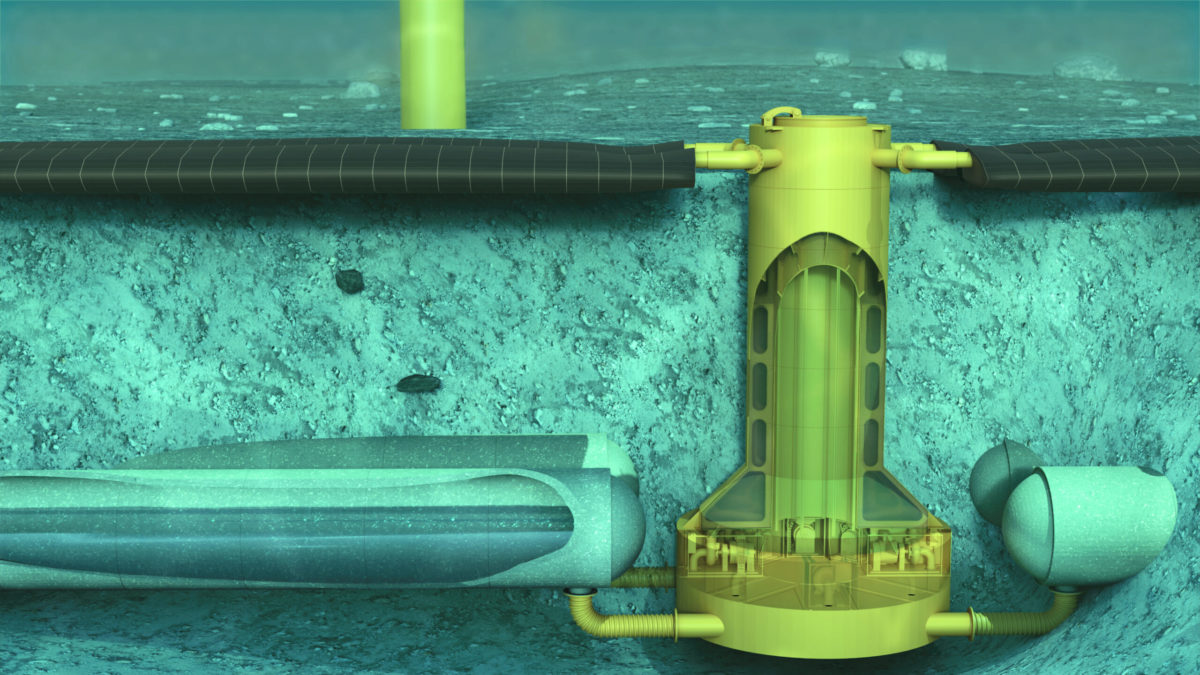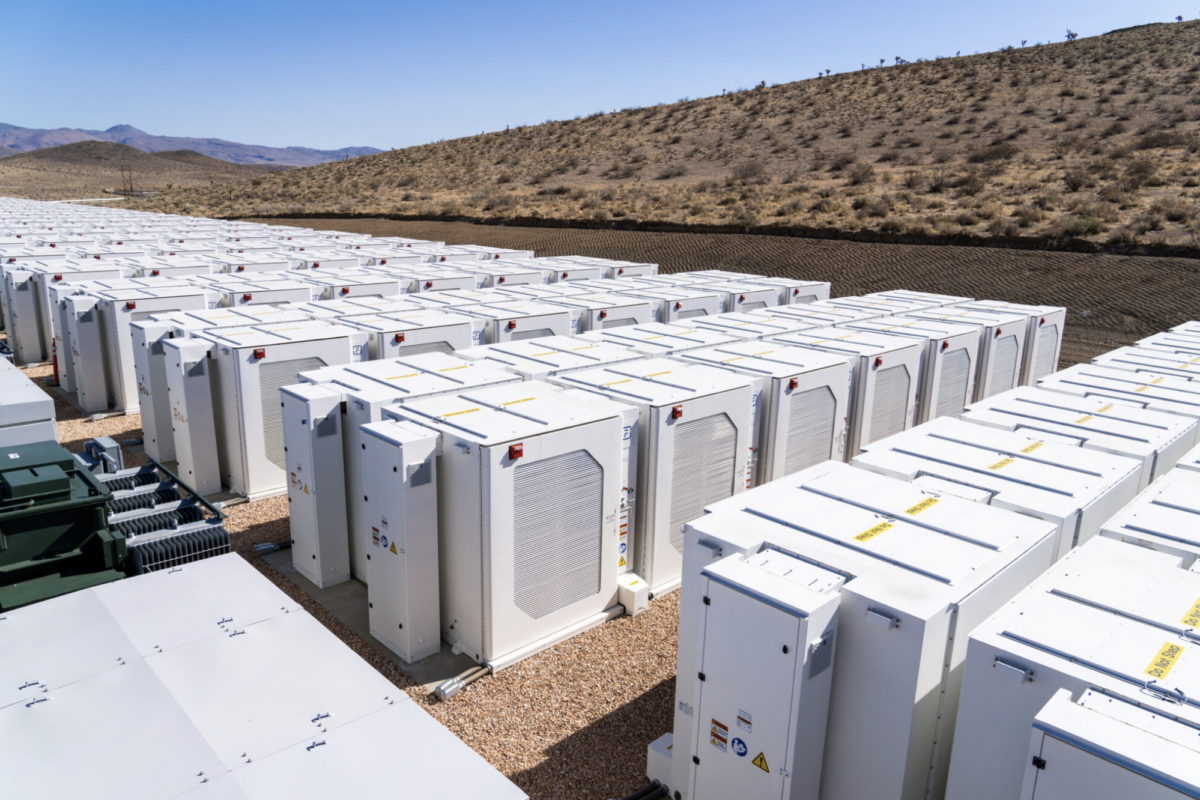Dutch start-up Ocean Grazer grabbed the limelight at the Consumer Electronics Show (CES 2022) in Las Vegas last week, where its new design for an offshore energy storage system based on hydro dam technology garnered the “Best of Innovation” award.
The Ocean Battery is a pumped hydro system in a box. Buried in the seabed, the battery provides storage up to the gigawatt-hour scale by connecting rigid reservoir elements, each with a storage volume of 10MWh. The system can be adapted to various forms of renewable power generation such as floating PV, offshore wind, tidal and wave energy.
Raw material sourcing
“There is a perfect match between the Ocean Battery and floating PV arrays,” Ocean Grazer CEO Frits Bliek told pv magazine. “As we can adapt the charging capacity independently from the discharging capacity, we can tune the capex [capital expenditure cost] to rapidly absorb the solar peak around noon and discharge the accumulated power of the rest of the day. In this way we can optimally tune into the business case of a floating PV array.”
The Ocean Battery features technology that has been in use at hydroelectric dams for more than a century. While it has identical functionality and performance, it comes with one big difference, as the hydrostatic pressure comes for free and there is no need to build an entire hydro dam.
The system
In other words, the Ocean Battery stores energy by pumping water from low-pressure rigid reservoirs, each holding up to 20 million liters of freshwater, into high-pressure flexible bladders installed on the seabed. During discharging, water stored as potential energy flows back from the flexible bladder to the rigid reservoir via hydro turbines that generate electricity.
“Minimal discharging time is 0.5 hours, sufficient for the highest demands in the utility sector,” said Bliek. “Any lower power-capacity-to-storage-capacity can be created, to support bulk shifting, for example. There is no self-discharge whatsoever so power can be stored as long as you want.”
The round trip efficiency of the Ocean Battery stands at around 78%. Its technical lifetime is rated at a minimal 20 years but is most likely 30-50 years, according to its developer. Ocean Grazer said the battery has low maintenance costs and is designed with sustainability in mind, enhancing marine life. It is made from readily available global materials steel, concrete, and rubber/PVC and uses clean water as the energy carrier.
According to its product sheet, the Ocean Battery is able to provide a wide range of grid services including frequency control, black-start power, and energy arbitrage. In addition to the traditional services provided by utility scale storage – such as curtailment prevention and congestion management – Ocean Battery can also allow “over-planting,” to maximize the energy yield of wind farms per square kilometer, ie it can make room for more turbine capacity at the same project, improving its economics.
Developer Ocean Grazer was spun out of the University of Groningen, in the Netherlands. The start-up describes itself as “the only company that provides a reliable, affordable and eco-friendly energy storage system that provides a flexible and modular solution for offshore and inshore energy storage at [a] gigawatt-hour scale.”
Ocean Grazer is developing its first commercial demonstrator for an inshore lake in the north of the Netherlands which hosts a floating solar installation. That system is slated for completion in 2023. “Next to that we are developing an offshore project connected to a wind farm,” Bliek added. “Potentially, a floating solar installation could be included in that project but details [have to be] worked out as we are in the middle of the scoping phase. The project will be completed in 2025.”
This content is protected by copyright and may not be reused. If you want to cooperate with us and would like to reuse some of our content, please contact: editors@pv-magazine.com.




Seems something is not working in the description of how it works. Bladders submerged in water are in, typically, equilibrium with their environment. I think it works if bladders are used to compress the air in a cylinder. Then the compressed air pushes the water back through the turbine to generate power. Am I missing something?
Ralph
Think of it like a balloon, when the end is open it’s in equilibrium with the atmosphere, but if you push more air into it, it will swell up and be under pressure. If you allow the air to escape it will do so, and under force.
A bladder of water lowered into the ocean would be at equilibrium, but as you lower it, it will compress and get smaller. So taking a ‘small’ ‘flat’ bladder on the seabed and pumping in water to expand it, will create a store of energy, just like that balloon, since to expand the bladder you are pushing back against substantial water pressure, which is always pushing back ready to drive the water back through the turbines.
You are right Ralph, but to generate energy, you need to use air, not water. If we compress air 100 m below the water level, its volume will shrink about 10 times. If we compress water, its volume will be reduced by only 1-2%. The same will happen in the turbine, but in the opposite direction. In this case, if we use water to generate energy, when 1-2% of the water passes through the turbine, the pressure will drop and generation will stop.
Hi Rumen. If you look at the animation, this isn’t about compressing water, it’s about pumping water into the expandable bladders on the seabed. When you want to generate electricity from that stored energy, you run the ‘seabed bladder’ water back through the turbines. It will be driven under pressure from the weight of water above the bladders, not from any small compression of the water inside the bladders.
So the energy storage is the energy needed to fill the bladders against external water pressure. And the energy release is the water being pushed out of the bladders, by the sea pressure.